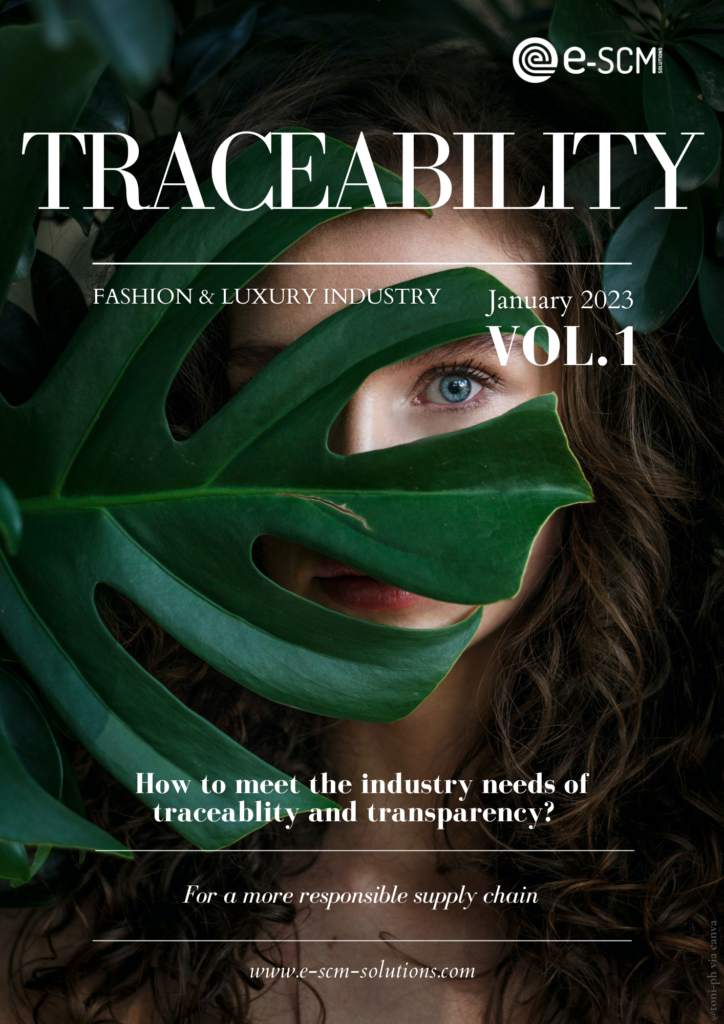Today the textile and clothing sector is subject to several issues, including a need to reduce its environmental footprint . The various brands and companies in the textile sector must implement new approaches and mechanisms to ensure greater traceability of materials and processes used throughout the life cycle of a textile product.
This requires specific organization and resources whose costs remain prohibitive compared to the economic balance of the textile and fashion industry. Thus, through our R&D , e-SCM wishes to study the long-term developments to be made to our supplier portal, whose primary purpose is the optimization of the Supply Chain , in order to make it interoperable with other distributed systems to meet the needs of Traceability issues and needs .

 What are the lessons from your report on transparency and traceability?
What are the lessons from your report on transparency and traceability?
Brands cannot simply declare their commitments. They need to provide proof. Unfortunately, there is no miracle solution for displaying the history of a garment or shoe on its label. Only the collection of data , verifiable and verified throughout the supply chain , offers the possibility of providing reliable information to the consumer in the form of a Digital Product Passport . There is no transparency without traceability . And this requires industrializing data collection with technological tools .
How can brands comply with the AGEC law?
Several solutions exist, tested and approved by brands around the world to meet their different needs. For large companies, the combination of supply chain management software , which traces data from the supply of materials, to manufacturing, transport and delivery, associated with restitution in the form of a QR code
on the label, is one of the most effective and accessible means in terms of price and implementation times.
Following the work carried out, we have published a White Paper Traceability Fashion and luxury sector | Traceability & transparency of the supply cycle for more responsible fashion. You can download in the language of your choice.

What are the next steps in your work within Belharra with the BALI Chair?
Our work has enabled the industry to move towards greater traceability and transparency in the upstream supply chain. They were rewarded in France and internationally, which is recognition of our contribution, particularly to the democratization and generalization of the Digital Product Passport .
It provides information to the consumer to inform their choices.
It is also an entry ticket to the second life of products. We have identified tools on the market that automatically generate ads on resale platforms, with all the necessary information such as a description, details of materials or the country of manufacture. But even more, the Digital Product Passport will be essential to the European textile-to-textile recycling sector recyclability .
We are beginning the last year of our thesis on this central subject: the collection of data in the service of circularity . And so we can close the loop.
Pantxika Ospital's thesis is directed by Jérémy Legardeur, Professor at ESTIA And co-supervised by Dimitri Masson, Professor at Estia and Cédrick Béler, Professor at ENIT.
Source: Extract from the 2022 activity report of the BALI Chair | Sustainable fashion, towards new standards on an industrial scale (in French).